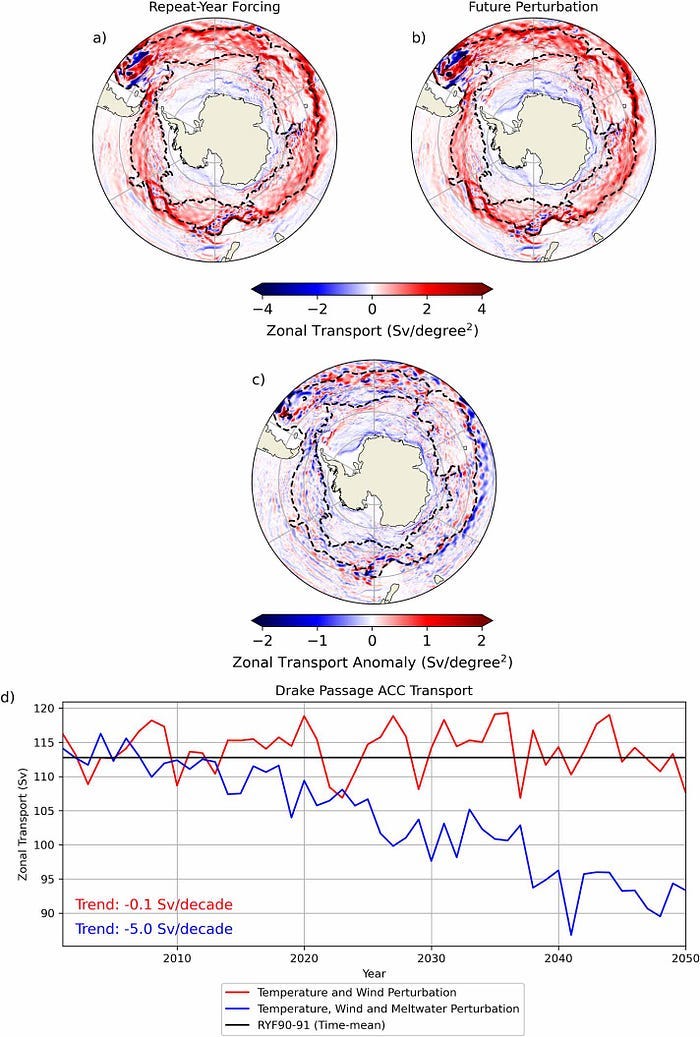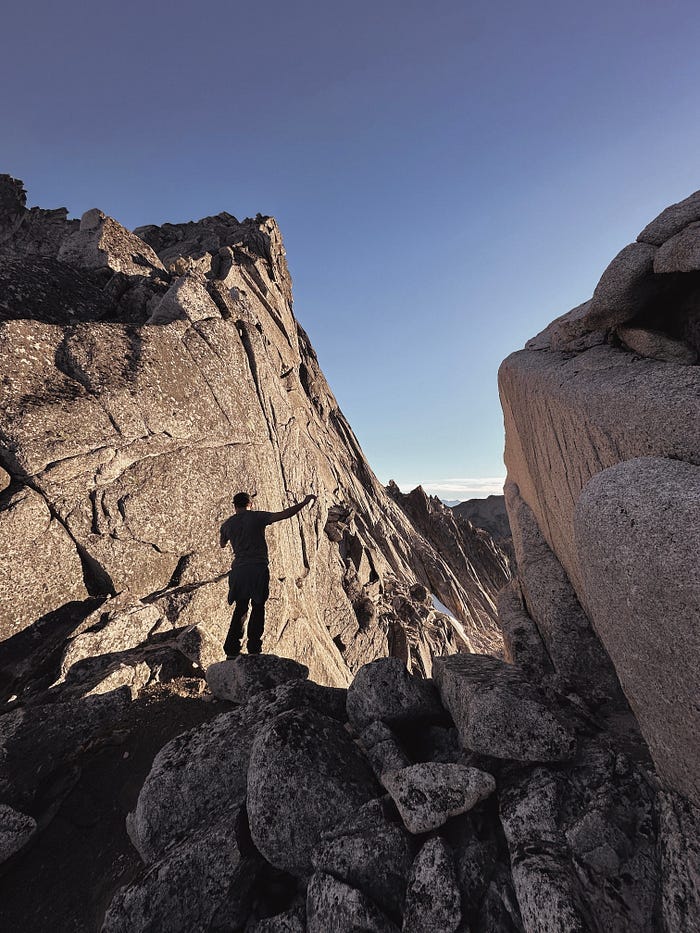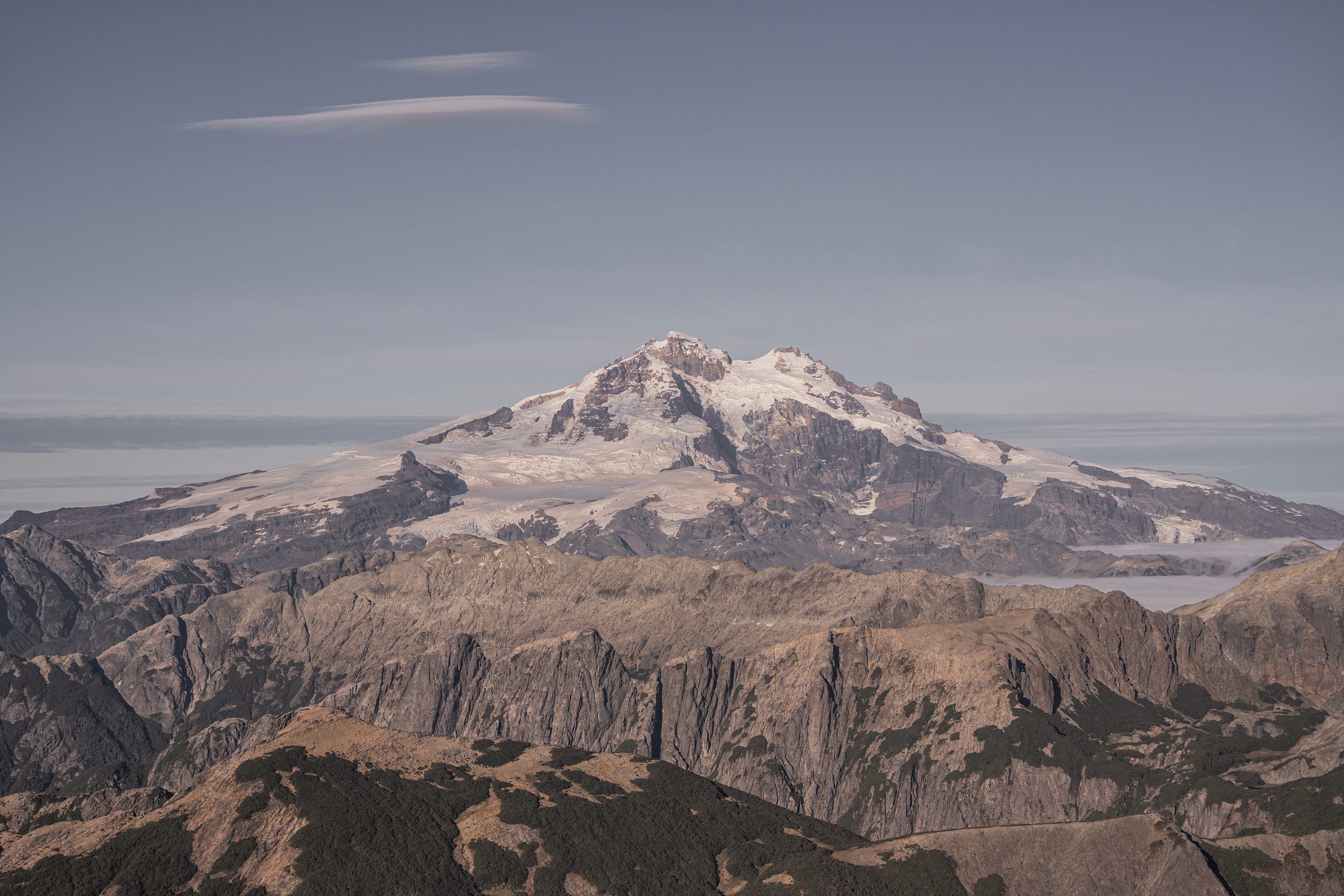The World’s Strongest Ocean Current Protecting Antarctica Is Failing
And the responsibility to protect a place where discovery still holds meaning
This past weekend, after 30 minutes of kayaking and a grueling 15-hour hike with 12-kilo backpacks, my girlfriend, two friends, and I reached the summit of an outlying mountain in Patagonia. The path (or lack of it) was anything but easy, and yet, so fascinating — endless stone gullies, thick forests, disturbed wasp nests, and a cold bivouac night by a lagoon, surrounded by glacial granite walls.
We’d hiked and climbed nearly 3,000 meters of vertical gain — just shy of 10,000 feet — and when we finally stood on the summit, we found a tin can with a summit logbook, part of a tradition left by Slovenian pioneers who first mapped this region. As we flipped through the pages, dated and faintly scribbled, we discovered ours was just the second recorded ascent — 34 years after the group of Slovenian climbers first reached this peak and named it after one of their own in 1990. Standing there, we were filled with a profound sense of accomplishment, knowing we had joined such an exclusive group.
And also, a powerful sense of isolation washed over us. Not that we hadn’t already felt it, but seeing the sparse entries confirmed it: this place is still remote. A few simple phrases from another time, written by strangers who’d shared the same sense of awe, connected us to a legacy that felt both personal and immense.
But as I wrote my own words on that near-empty logbook, the weight of the moment struck me — not just the pride, but the responsibility. A sacred duty to preserve this rare gem of solitude, our local Atlantis, pristine and pure, to protect it from the suffocating modern world, to shield it from waypoints and trending hashtags.
And to keep it as a place where discovery still holds meaning.


Because the world is heading in the opposite direction. Today, even Antarctica, once the ultimate untouched frontier, is no longer exempt from this global tide of interconnection (or should we now say overconnection). The largest desert in the world had 122,000 (!) visitors in 2024, as reported by the Antarctic and Southern Ocean Coalition — a number that will certainly increase in the coming years.
And while we fight to preserve the last untouched corners of the Earth, the very systems that keep our planet’s climate in balance are eroding — starting with the Antarctic Circumpolar Current.
Earth’s Strongest Ocean Current Under Disruption
Unlike the Gulf Stream that weaves its way along the US East Coast or the Kuroshio Current near Japan, most of us are unaware of the Antarctic Circumpolar Current (ACC) — Earth’s most powerful ocean current, and yet, hardly a household name.
This current, flowing clockwise around Antarctica, is a colossal pulse of water that carries between 165 and 182 million cubic meters every single second — five times stronger than the Gulf Stream, 100 times stronger than the Amazon River. It’s the engine of the global “ocean conveyor belt,” connecting the Pacific, Atlantic, and Indian oceans, circulating water, heat, and nutrients to maintain the delicate balance of global climate systems.
The ACC has also been Antarctica’s natural guardian, acting like a protective moat around the icy continent by keeping warm water and invasive species such as southern bull kelp — and any animals hitching a ride on these rafts — at bay, spreading them out as they drift towards the continent.
The oceans absorb over 90 percent of atmospheric heat, and the Southern Ocean stands as our last great shield buffering climate change. It takes in 75 % of heat and 40 % of human-generated carbon dioxide from global oceans. Simply put, if it didn’t, we wouldn’t be here: our planet would be an uninhabitable furnace.
The mechanism lies in the ocean’s varying temperature, salinity, and density layers, with sea ice playing a starring role in forming these layers. When the ocean’s surface freezes, it expels salt making the surrounding water denser and driving it deep into the Southern Ocean. This process, known as the thermohaline cycle (thermo meaning heat; haline meaning salt), fuels the conveyor belt of ocean circulation, a vital heartbeat that drives our planet’s climate engine.
But melting cool water from Antarctic sea ice and advancing glaciers are disrupting this cycle. The freshening of surface waters creates a lighter water mass, hindering the thermohaline cycle by diluting the salt. Though it takes 1,600 years to complete, the vital ocean current is no longer immune to the pressures of our warming world.
As new research suggests, in a high emissions future ran by Australia’s fastest supercomputer and climate simulator, the ACC could slow down by 20% by 2050, further accelerating Antarctic ice sheet melting and sea level rise — and supported by previous research that suggested one vital part of this conveyor belt could be headed for a catastrophic collapse.

In this future projection — that captures features others often miss, such as eddies — cold, fresh melt water from Antarctica migrates north, filling the deep ocean as it goes which causes major changes to the density structure of the ocean. And ocean currents respond to changes in temperature, salt levels, wind patterns, and sea-ice extent — multiple fronts of vulnerability, all of which are being pushed to their breaking point by climate change.
So the global ocean conveyor belt is vulnerable to climate change on multiple fronts. Yes, another potentially devastating side effect of the insane human-driven climate change that could transform the world as we know it.
What Happens to the ACC Affects Us All
A weaker Antarctic Circumpolar Current is not an isolated event — it reverberates across the globe.
What scientists found suggests a “substantial reconfiguration of Southern Ocean dynamics, with far-reaching impacts on global climate patterns, oceanic heat distribution, and marine ecosystems”.
There could be more climate variability, with greater extremes in certain regions, and accelerated global warming due to a reduction in the ocean’s capacity to act as a carbon sink.
The slowdown could also lead to a vicious “feedback loop”, where more warm water reaches the Antarctic shelf, accelerating ice melting while exacerbating rising sea levels and further weakening the current. This could also disrupt ecosystems and food webs, as the oceanic current helps to prevent invasive species from reaching the fragile continent, or redistributes them.
Add to the mix that a study found that the white continent is likely warming at almost twice the rate of the rest of the world, estimated by the Intergovernmental Panel on Climate Change (IPCC), and it is quite logical to see that Antarctica’s contribution to global sea-level rise has tripled in the past decades to approximately 0.6 millimeters of global sea-level rise annually. To put into perspective just how much ice is there: if all of Antarctica’s ice were to melt, it would lead to a staggering 57 meters (187 feet) of sea-level rise, submerging coastal cities worldwide.
Time Travelling From a Patagonian Summit
Standing on that summit in Patagonia after a brutal ascent, staring at a world so pure it felt suspended outside of time, I thought about the Slovenian pioneers who had mapped this place decades before us. They climbed without certainty, without GPS, without satellite images telling them what lay ahead.

They just stepped into the unknown and returned with routes, topography, and stories — evidence that it could be done — while they left footprints on a newly named peak. We left our names next to theirs, together with footprints on a warming planet.
We want to believe that the world still holds places beyond human reach. But we’ve long since erased the line between what is wild and what is ours to destroy. The same predatory system that keeps drilling, burning, and expanding is the one that will look at a place like this — this rare, untouched wilderness — and see not something to protect, but something to extract.
Far beyond the Patagonian summits and fjords, the Antarctic Circumpolar Current, once the planet’s great climate regulator, is slowing down while the Southern Ocean, Earth’s largest carbon sink, is absorbing the consequences of our inaction. Rain is falling where it never should. Sea ice is disappearing. The very forces that once made Antarctica untouchable are failing in real time.
And standing on that peak, surrounded by raw, indifferent wilderness, the question was unavoidable: Are we truly prepared for a world without places like this?
Because this is where we are. This is what our leaders are choosing. Not with a single momentous decision, but with every pipeline approved, every net-zero target kicked down the road, every industry that refuses to change.
Antarctica won’t wait for us to catch up. Neither will the rising seas. Or the growing flames.
So be loud.







What a beautiful piece Ricky. Heartbreaking when we think about it- how we're wrecking the planet. There's just too many of us. But that might change soon as a new feedback loop kicks in that reduces our numbers.
Thank you because even though this is frightening, it must be known about in order to be acted on. Aren't I an optimist?